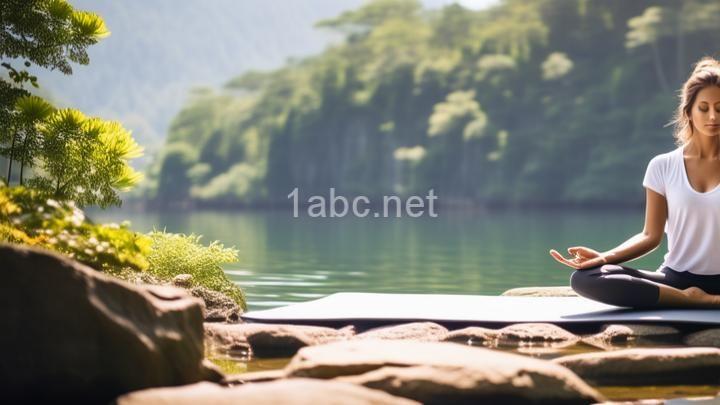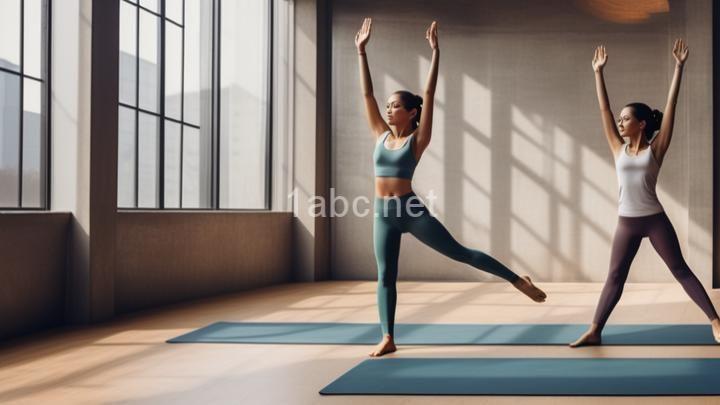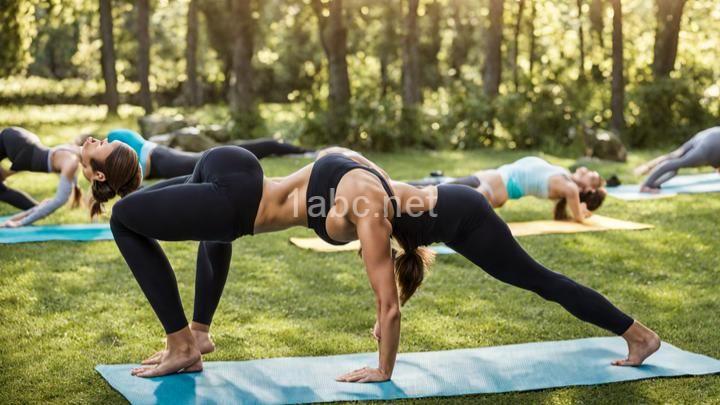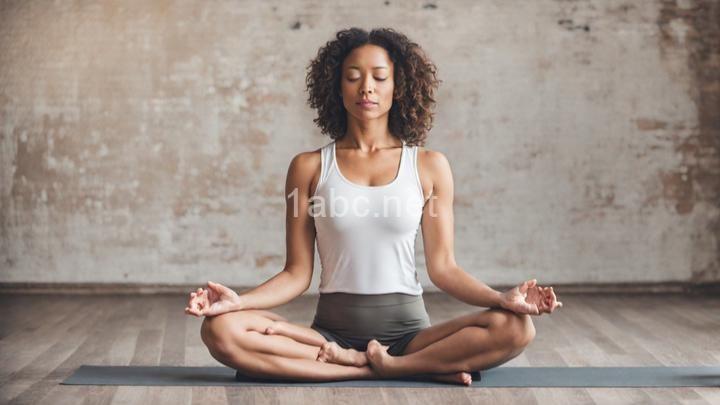Unlocking the Benefits of Yoga: Beginner Poses for Mindfulness and Relaxation

Introduction:
Welcome, dear readers, to this blog post where we will explore the wonderful world of yoga and its profound impact on mindfulness and relaxation. In today's fast-paced and hectic world, finding moments of peace and tranquility is essential for our overall well-being. And that's where yoga comes in. So, grab your yoga mat, find a cozy spot, and let's dive into the incredible benefits of yoga and some beginner poses that will help you cultivate mindfulness and relaxation.
I. Understanding the Benefits of Yoga:
Before we delve into the poses, let's take a moment to understand the incredible benefits that practicing yoga can bring to our lives. Yoga is not just a physical exercise; it is a holistic practice that nourishes both the body and mind. Research has shown that regular yoga practice can improve flexibility, strength, and balance while reducing stress, anxiety, and depression. It can also enhance mental clarity, focus, and sleep quality. So, by incorporating yoga into our lives, we can experience a multitude of positive effects that contribute to our overall well-being.
II. Getting Started with Yoga:
A. Preparation:
To fully immerse ourselves in the practice of yoga, it is important to create a peaceful environment. Whether you choose to practice at home or attend a beginner-friendly yoga class, find a quiet space where you can connect with yourself and your practice. Gather your essentials, such as a yoga mat and comfortable clothing, to ensure a comfortable and enjoyable experience.
B. Beginner Poses: Mindfulness and Relaxation:
Now, let's explore some beginner yoga poses that are perfect for cultivating mindfulness and relaxation.
1. Mountain Pose (Tadasana):
Begin by standing tall with your feet grounded firmly on the mat and your palms facing forward. This pose helps promote balance, focus, and self-awareness. As you stand in this pose, imagine yourself as a majestic mountain, rooted deep into the earth, feeling the strength and stability that it provides.
2. Child's Pose (Balasana):
Kneel down on your mat and gently lower your torso to rest your forehead on the mat. Extend your arms forward, palms facing down. This pose helps release tension in the back and shoulders while promoting relaxation. Allow your breath to deepen as you surrender yourself to the gentle embrace of this pose.
3. Corpse Pose (Savasana):
Lie flat on your back with your legs extended and your arms relaxed at your sides. This pose allows for deep relaxation, reduces anxiety, and enhances mindfulness. Close your eyes and bring your attention to your breath, letting go of any tension or thoughts that may arise. Allow your body to sink into the mat, feeling supported and at ease.
4. Cat-Cow Pose (Marjaryasana-Bitilasana):
Begin in a tabletop position with your hands directly under your shoulders and your knees under your hips. As you inhale, arch your back and lift your gaze towards the ceiling, creating a gentle arch in your spine (Cow Pose). As you exhale, round your spine, tucking your chin towards your chest (Cat Pose). This pose increases flexibility in your spine while calming the mind. Flow smoothly between these two poses, syncing your movements with your breath.
III. Tips for Practicing Mindfulness During Yoga:
To deepen your experience of mindfulness during your yoga practice, here are some helpful tips:
A. Focusing on Breath:
Pay close attention to your breath as you move through each pose. Inhale deeply through your nose, filling your lungs with fresh energy, and exhale slowly through your mouth, releasing any tension or stress. Let your breath be your anchor, guiding you into the present moment.
B. Staying Present:
In the midst of our busy lives, it can be challenging to quiet the mind and be fully present. During your yoga practice, let go of distractions and consciously focus on the present moment. One technique to quiet the mind is to repeat a calming mantra silently to yourself. It could be as simple as "I am calm and at peace" or "I am present in this moment."
IV. Precautions and Modifications:
As with any physical activity, it is important to listen to your body and practice yoga with awareness. If you have any concerns or limitations, it is advisable to consult with a healthcare professional or a qualified yoga instructor. They can provide guidance on modifications or alternative poses that suit your individual needs. Remember, yoga is a personal journey, and it's essential to honor and respect your body's limitations.
Conclusion:
Congratulations on taking the first step towards unlocking the benefits of yoga! We've explored the incredible benefits of yoga for mindfulness and relaxation and learned some beginner poses to get you started on your yoga journey. As you embark on this path, remember to be gentle with yourself, embrace the present moment, and enjoy the beautiful union of body, mind, and breath that yoga offers. We would love to hear about your experiences or answer any questions you may have, so please feel free to reach out. Namaste!
Remember, the tone throughout this blog post is friendly, welcoming, and supportive. Our goal is to establish a connection with you on a personal level and provide you with valuable insights and guidance. So, let's dive into the world of yoga together and unlock its incredible benefits for mindfulness and relaxation.
FREQUENTLY ASKED QUESTIONS
What are the benefits of practicing yoga?
Practicing yoga offers a multitude of benefits for both the mind and body. Here are some of the key advantages:
-
Physical Fitness: Yoga helps improve flexibility, strength, and balance. By performing various poses and movements, you can enhance your overall physical fitness and stamina.
-
Stress Relief: Yoga incorporates deep breathing exercises and relaxation techniques, which can effectively reduce stress levels. It promotes a sense of calmness and relaxation, helping you to unwind and let go of tension.
-
Mental Clarity: Regular yoga practice can improve mental clarity and focus. The combination of physical movement, breath control, and meditation helps to clear the mind and enhance cognitive function.
-
Improved Posture: Many yoga poses focus on proper alignment and posture. By regularly practicing these poses, you can develop better posture and alignment, which can help alleviate back pain and improve overall body mechanics.
-
Increased Energy: Yoga stimulates the body's energy flow, helping to boost vitality and overall energy levels. By practicing yoga regularly, you may experience increased vitality and a greater sense of well-being.
-
Weight Management: Yoga can be an effective tool for weight management. It promotes mindful eating, increases body awareness, and helps to build lean muscle, which can aid in weight loss and maintenance.
-
Better Sleep: Yoga can improve the quality of your sleep by reducing stress and promoting relaxation. The calming effects of yoga can help you achieve a more restful and rejuvenating sleep.
-
Emotional Well-being: Yoga promotes a positive outlook and emotional well-being. It can help alleviate symptoms of anxiety and depression by increasing self-awareness and cultivating a sense of inner peace.
Remember, the benefits of yoga are best experienced through regular practice. Whether you're a beginner or an experienced practitioner, incorporating yoga into your routine can have a profound impact on your overall well-being. So, roll out your mat and start reaping the benefits of this ancient practice!
Can anyone practice yoga, regardless of their fitness level?
Absolutely! Yoga is a versatile practice that can be tailored to suit individuals of all fitness levels. Whether you're a beginner or an experienced athlete, there are modifications and variations available to accommodate your needs. Yoga is not about being flexible or having a specific body type; it's about connecting mind, body, and breath.If you're a beginner, it's essential to start with beginner-friendly classes or videos that focus on foundational poses and alignment. As you progress, you can gradually increase the intensity and challenge of your practice. Remember, it's important to listen to your body and honor its limitations. Pushing yourself too hard can lead to injuries.
For those with physical limitations or injuries, there are specific modifications and props available to make yoga accessible and safe. Props like blocks, straps, and bolsters can assist in achieving proper alignment and provide support during poses.
Yoga is not just about physical fitness; it also offers numerous mental and emotional benefits. It can help reduce stress, improve focus, enhance flexibility, and promote overall well-being.
So, regardless of your fitness level, age, or body shape, yoga is for everyone. With patience, practice, and guidance from a qualified instructor, you can embark on a fulfilling yoga journey that suits your individual needs and goals.
What are some beginner-friendly yoga poses for mindfulness and relaxation?
Sure! Here are a few beginner-friendly yoga poses that can help promote mindfulness and relaxation:
-
Child's Pose (Balasana): Start by kneeling on the floor and sit on your heels. Slowly bend forward, extending your arms in front of you, and rest your forehead on the mat or a block. This pose helps to release tension in the back, shoulders, and neck while promoting a sense of calm.
-
Cat-Cow Pose (Marjaryasana-Bitilasana): Begin on all fours with your hands directly under your shoulders and knees under your hips. Inhale, arch your back, and lift your chest and tailbone towards the ceiling (Cow Pose). Exhale, round your spine, and tuck your chin towards your chest (Cat Pose). This gentle flow helps to release tension in the spine and increase body awareness.
-
Legs-Up-The-Wall Pose (Viparita Karani): Sit close to a wall and lie down on your back, extending your legs vertically against the wall. Rest your arms by your sides, palms facing up. This pose helps to calm the nervous system, improve circulation, and relieve fatigue and stress.
-
Standing Forward Bend (Uttanasana): Stand with your feet hip-width apart and slowly fold forward, allowing your head and arms to hang towards the ground. Bend your knees if needed. This pose helps to release tension in the hamstrings, lower back, and shoulders, promoting relaxation and soothing the mind.
-
Corpse Pose (Savasana): Lie down on your back, arms by your sides, and close your eyes. Relax your entire body and focus on your breath. This pose allows you to fully relax and integrate the benefits of your yoga practice, promoting mindfulness and deep relaxation.
Remember, it's important to listen to your body and modify any poses as needed. If you're new to yoga, consider attending a beginner's class or seeking guidance from a qualified yoga instructor. Enjoy your practice and embrace the benefits of mindfulness and relaxation!
How often should I practice yoga to experience its benefits?
To experience the benefits of yoga, it is recommended to practice regularly. Ideally, aim for at least three to five times a week. This frequency allows your body and mind to adapt and reap the rewards of a consistent practice. However, it's important to listen to your body and find a balance that works for you. If you're just starting out, starting with a few sessions per week and gradually increasing the frequency can be a good approach. Remember, practicing yoga is a personal journey, so find a schedule that fits your lifestyle and goals.



